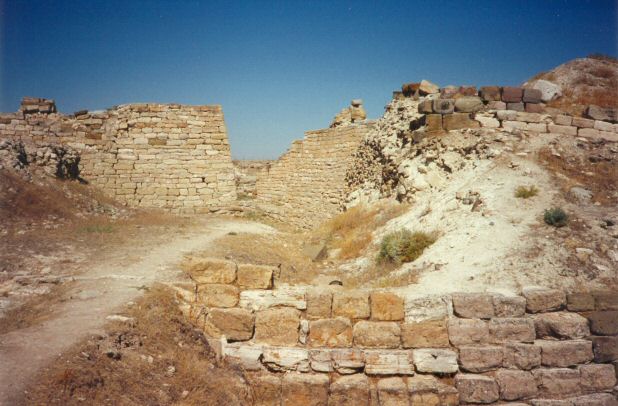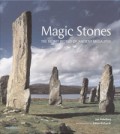<< Our Photo Pages >> Gordion - Ancient Village or Settlement in Turkey
Submitted by davidmorgan on Sunday, 07 December 2014 Page Views: 7475
Multi-periodSite Name: Gordion Alternative Name: YassihöyükCountry: Turkey
NOTE: This site is 64.78 km away from the location you searched for.
Type: Ancient Village or Settlement
Nearest Town: Ankara Nearest Village: Polatli
Latitude: 39.649860N Longitude: 31.977660E
Condition:
| 5 | Perfect |
| 4 | Almost Perfect |
| 3 | Reasonable but with some damage |
| 2 | Ruined but still recognisable as an ancient site |
| 1 | Pretty much destroyed, possibly visible as crop marks |
| 0 | No data. |
| -1 | Completely destroyed |
| 5 | Superb |
| 4 | Good |
| 3 | Ordinary |
| 2 | Not Good |
| 1 | Awful |
| 0 | No data. |
| 5 | Can be driven to, probably with disabled access |
| 4 | Short walk on a footpath |
| 3 | Requiring a bit more of a walk |
| 2 | A long walk |
| 1 | In the middle of nowhere, a nightmare to find |
| 0 | No data. |
| 5 | co-ordinates taken by GPS or official recorded co-ordinates |
| 4 | co-ordinates scaled from a detailed map |
| 3 | co-ordinates scaled from a bad map |
| 2 | co-ordinates of the nearest village |
| 1 | co-ordinates of the nearest town |
| 0 | no data |
Internal Links:
External Links:
I have visited· I would like to visit
davidmorgan has visited here

Note: Archaeologists uncover massive fortifications in ancient city of King Midas, see the comment on this page for more
You may be viewing yesterday's version of this page. To see the most up to date information please register for a free account.


Do not use the above information on other web sites or publications without permission of the contributor.
Nearby Images from Flickr






The above images may not be of the site on this page, but were taken nearby. They are loaded from Flickr so please click on them for image credits.
Click here to see more info for this site
Nearby sites
Click here to view sites on an interactive map of the areaKey: Red: member's photo, Blue: 3rd party photo, Yellow: other image, Green: no photo - please go there and take one, Grey: site destroyed
Download sites to:
KML (Google Earth)
GPX (GPS waypoints)
CSV (Garmin/Navman)
CSV (Excel)
To unlock full downloads you need to sign up as a Contributory Member. Otherwise downloads are limited to 50 sites.
Turn off the page maps and other distractions
Nearby sites listing. In the following links * = Image available
1.7km E 79° Gordion Museum Museum
1.8km ENE 75° Midas Tumulus* Artificial Mound
11.7km ENE 78° Beycegiz Tumulus* Chambered Tomb
21.8km ENE 73° Hacitugrul Tumulus Ancient Village or Settlement
30.6km SSW 195° Yagri* Ancient Village or Settlement
49.0km SW 224° Pessinous* Ancient Temple
51.5km ESE 105° Gavurkale* Ancient Village or Settlement
72.9km ENE 71° Kocumbeli Ancient Village or Settlement
73.7km ENE 68° Middle East Technical University Museum Museum
79.5km ENE 67° Ankara Tumuli* Round Barrow(s)
82.0km ENE 66° Ankara Temple of Augustus and Roma* Ancient Temple
82.1km ENE 67° Ankara Museum of Anatolian Civilizations* Museum
106.2km W 265° Kulluoba Hoyuk Ancient Village or Settlement
117.9km WSW 246° Pismis Kale Hillfort
119.0km WSW 247° Areyastis Monument* Sculptured Stone
119.6km WSW 246° Midas City* Ancient Village or Settlement
119.6km WSW 247° Gerdek Kaya* Rock Cut Tomb
124.5km E 93° Büklükale Ancient Village or Settlement
124.5km NNW 346° Bithynium Ancient Village or Settlement
127.0km WSW 248° Kümbet North Tomb* Rock Cut Tomb
127.4km WSW 248° Kümbet Rock Sanctuary* Ancient Temple
127.4km WSW 248° Kümbet Lion Tomb* Rock Cut Tomb
132.9km S 180° Yalburt* Carving
141.8km WSW 242° Aslantas* Carving
141.8km WSW 242° Yilantas* Rock Cut Tomb
View more nearby sites and additional images



 We would like to know more about this location. Please feel free to add a brief description and any relevant information in your own language.
We would like to know more about this location. Please feel free to add a brief description and any relevant information in your own language. Wir möchten mehr über diese Stätte erfahren. Bitte zögern Sie nicht, eine kurze Beschreibung und relevante Informationen in Deutsch hinzuzufügen.
Wir möchten mehr über diese Stätte erfahren. Bitte zögern Sie nicht, eine kurze Beschreibung und relevante Informationen in Deutsch hinzuzufügen. Nous aimerions en savoir encore un peu sur les lieux. S'il vous plaît n'hesitez pas à ajouter une courte description et tous les renseignements pertinents dans votre propre langue.
Nous aimerions en savoir encore un peu sur les lieux. S'il vous plaît n'hesitez pas à ajouter une courte description et tous les renseignements pertinents dans votre propre langue. Quisieramos informarnos un poco más de las lugares. No dude en añadir una breve descripción y otros datos relevantes en su propio idioma.
Quisieramos informarnos un poco más de las lugares. No dude en añadir una breve descripción y otros datos relevantes en su propio idioma.